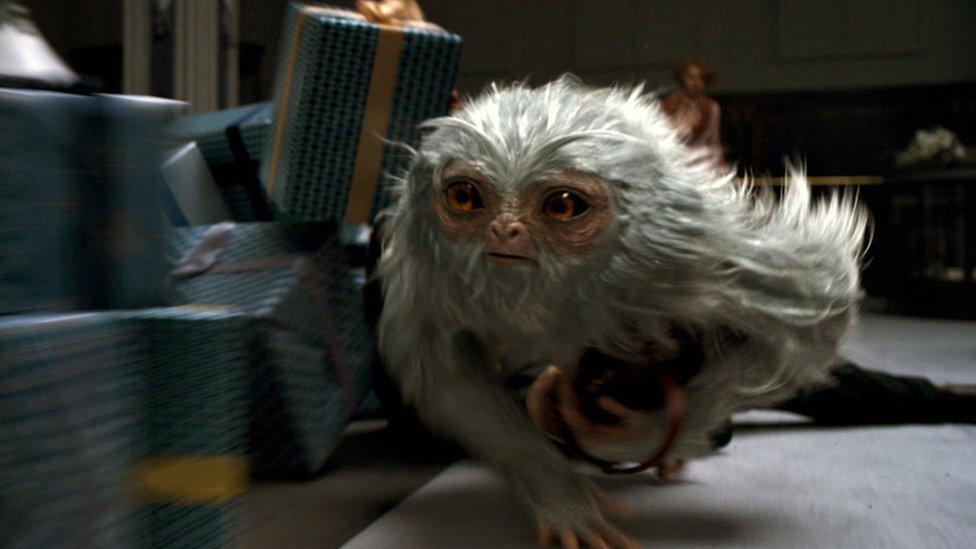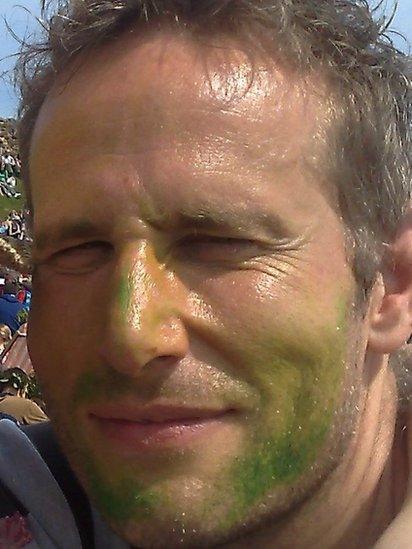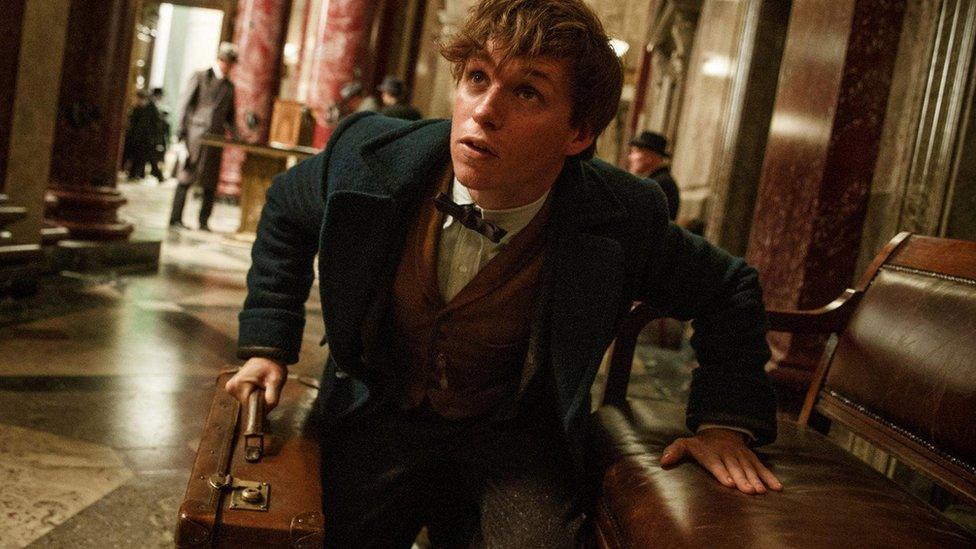Fantastic beasts and the science of identifying them
- Published

The Demiguise is one of the new fantastic beasts introduced in the film
Birds that create storms when they fly, long-snouted "mole-like" creatures who have a talent for sniffing out treasure and "ape-like" animals who have the power to become invisible - yes, the fantastic beasts have arrived.
In the film Fantastic Beasts and Where to Find Them, a spin-off of the Harry Potter series, Newt Scamander uses magizoology, a science studied in JK Rowling's imaginary wizarding world, to help him understand these strange creatures.
But does such a branch of science exist in the "muggle" (or non -magical) world?
Perhaps cryptozoology, the science which identifies and describes creatures from folklore and fossil records, could give us some clues.
Anthony McAtamney, 44, is from County Armagh and describes himself as an "ordinary bloke" who has "a life-long interest in the paranormal and cryptozoology"

Anthony McAtamney has always been interested in the paranormal
He said: "It's an enigmatic field that few scientists delve into and it's not just about the myths and what-ifs.
"Remember the giant squid - referred to as the Kraken in cryptozoology before it was renamed by scientists upon its discovery - was not photographed or filmed live until 2004."

A cryptozoologists' guide
James Newton, a university disability advisor by day, is the founder of The London Cryptozoology Club and offers his advice to any budding cryptozoologists.

Since childhood James Newton "always had an interest in animals"
"I would say read books, don't get all your info off the internet - there's a lot of good information on the internet but you have to sift through a load of rubbish too."
"I would also say research older materials," he said. "Lots of contemporary resources - books, TV shows etc - are very fast-paced but with little depth.
"If people are really interested in zoology in general and cryptozoology in particular I would advise them to make inroads wherever possible into mainstream science and work on getting at least certain aspects of the study more credibility.
"Don't be embarrassed about your interest - it's what makes you a thinking and interesting individual."

Anthony cites one of his heroes and main influences within this field as Dr Karl Shuker, external.
"In my mind he was balanced and provided the folklore and the facts where he could around the sightings but also gave alternates to the sightings where possible," he said.
"He also gave examples of how such creatures may exist which almost inspired a romantic notion in me that the world has more to offer even as we become more modern.
"Whilst he does have a scientific approach he doesn't openly ridicule - his work is thought provoking and well researched."
The cryptozoology behind the characters
From Murtlaps to Mooncalfs JK Rowling has added a whole menagerie of magical creatures to the wizarding world in this, the first of the Fantastic Beasts film franchise.
And Anthony can see parallels with certain animals identified in cryptozoology, known as cryptids.
One such creature is the Thunderbird, described on Pottermore as "a magical American bird closely related to the phoenix" who can "sense danger and create storms as it flies."
Thunderbirds, external also have one of the houses of the American school of witchcraft and wizardry, Ilvermorny, external, named after them.

Eddie Redmayne plays the magizoologist Newt Scamander in the film Fantastic Beasts and Where to Find Them
"People sometimes equate Thunderbirds to modern day sightings of Pterosaur that we hear from in Ohio, New Mexico and Papa New Guinea," Anthony said.
"However the Thunderbird is a North American cryptid and has basis in legend with the Native Americans.
"So her [Rowling's] linking it to Native Americans is very good and indicative of her research.
"There are theories that Thunderbirds were large birds that used the currents from storms, much like eagles, to whip up warm updrafts to aid them in flights, hence they may have been spotted following paths of thunderstorms which in turn gave rise to the flapping of the wings creating thunder."
He can see parallels with the "ape-like" Demiguise, external and many cryptids based on ape-like creatures such as Bigfoot and the Ebu Gogo, external too.
Although Anthony also believes that there are characteristics of standard zoological apes present in this character as well.
"There are so many real species of monkey and especially the marmoset monkey which I think it resembles," he said.
- Published14 November 2016

- Published3 August 2016
